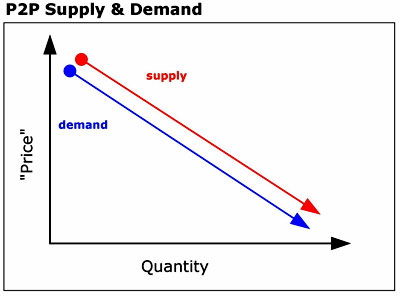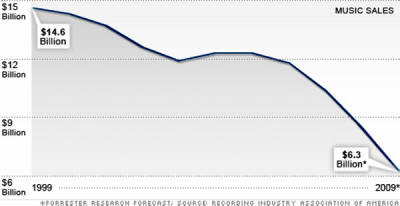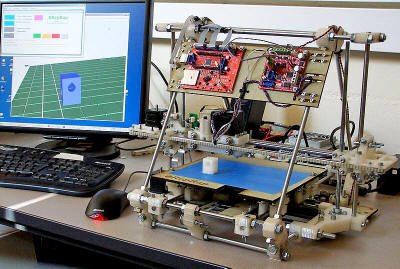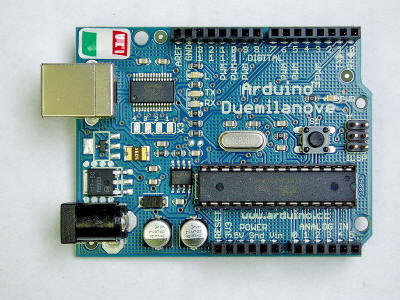|
by Tony Cartalucci
January 22, 2011
Part One
Paradigm Shifts & Open Source Hardware
Introduction
The agenda has been set for generations by the
moneyed elite who held the uncontested capital and the physical means to
mass produce propaganda and disseminate it amongst the population. The only
way to have countered this propaganda was public speaking, mailing lists,
fliers, posters, etc., all at the immense cost of the publisher. The forming
of organizations to help cover these costs and produce media presented a
target for the establishment to infiltrate and ultimately co-opt.
This was made possible via
information technology (IT), and the exploitation of this technology to
produce alternative media is still reverberating with far reaching
implications.
P2P file sharing means digital files can be copied and distributed at no cost. CD's, DVD's, and other older forms of holding media are no longer necessary, nor is the cost involved in making them or distributing them along a traditional logistical supply chain. Disc burners, however, allow users the ability to create their own physical copies at a fraction of the cost of buying the media from the stores.
Supply and demand is turned on its head as the more popular a certain file becomes via demand, the more of it that is available for sharing, and the easier it is to obtain.
Supply and demand increase in tandem towards a lower "price" of obtaining the said file.
Media moguls are now faced with a choice:
They have chosen the latter, and to no one's surprise, they are losing billions in sales per year.
Their strategy is to control the actual media itself as "intellectual
property" and to chase down unauthorized users of their "property" literally
to the ends of the earth. In the process they have alienated themselves from
their own consumer base and spurred people, tired of big corporations, to
delve into the world of alternative music, film, and media.
The price of clinging to an antiquated business model is: 8.3 billion USD. New alternative media supported by advertisements, live performances, and other innovative means have weathered this disruptive technology, and in many cases, benefited from the larger audience it gives them access to.
In many ways, the big media corporations are feeding the alternative movement, by chasing people who have tasted free media, away from Hollywood and the big recording labels and into the hands of people gladly offering free entertainment.
...have allowed a myriad of alternative news outlets to flourish.
Reputation, accuracy, honesty, and research have become the determining factors of success and reach, not funding. Funding had once been the determining factor of who set the public agenda.
It now plays a diminishing role as alternative news,
fixated on truth and accuracy collectively catches up to established news
agencies.
Those outlets that repeatedly provide
accurate information will procure the largest audience/demand. Those that
fail, lose their audience.
While this is not possible in a monopoly,
particularly the corporate media monopoly of the "left/right paradigm" of
false choice, it is inevitable in the field of real competition that now
exists online due to information technology.
"Underground" counter-corporate music and film has
been around for a long time but through the combination of technology and
the zealous corporate lawyers disenfranchising a whole new generation that
now seeks an alternative, it is truly coming of age.
What's more is that someone can now spend
their free-time producing media rather than consuming it.
And while the focus
has been on media, it will now shift over to the physical world of
production.
Factories, forges, mines, and the manpower to operate them requires vast
fortunes. And like information, technology is eliminating these barriers and
bringing the means of production literally into the hands of the people, not
through Marxist policy, but through innovation and free market mechanics.
Some CNC
machines add material rather than cut it away, thus making it a 3D printer.
Advanced
fabrication techniques have given rise to companies like Local Motors, the
embodiment of open-sourced localized industry where cars are literally on
the menu.
Unlike the propitiatory machines populating modern large-scale production lines, these smaller scale machines are considered "open-source hardware." Open-source hardware entails all the blueprints, component lists, instructions for assembly, and usually a community built around it for collaborative development.
While purchasing the physical hardware is still
up to the user, the methods of constructing it are free to use for all.
Open-source 3D printer
RepRap, Mendel The 3D printer MakerBot and its open source sibling RepRap are both based on computer controller platforms called Arduino, yet another example of open-source hardware going mainstream and opening up the door to a historical industrial paradigm shift.
Arduino appears as a small circuit board with a USB connector. It allows users with little or no electronic expertise to bridge the gap between their computer and the physical world.
Arduino controllers allow one to create everything from robots, to remote
controlled webcams, interactive clothing, automated home appliances,
physical devices that hook up to web applications and just about all the
technological gadgets one currently depends on China Inc. for. The Arduino open-sourced prototyping platform allows ordinary people, students, and entrepreneurs
to develop their own technology. No
multi-million dollar R&D lab required. The best part about the Arduino controller is that not only is it open-sourced, and has a community of users built up around it and its improvement, but many of the projects based on the controller are open-sourced as well.
As a beginner hobbyist or an intrepid entrepreneur
ventures into the realm of technological invention, they do so with
information and resources to prevent them from having to 'reinvent the
wheel' and move on specifically towards their goal.
"Personal manufacturing" is what this revolution is being coined, and is explained in lengthy detail here, by Dominic Muren.
A thirty minute documentary covering the development of Arduino
English version
Version en Espaņol
With a growing community of people determined to become collaborative producers rather than fit into the producer/consumer paradigm, and 3D files for physical objects already being shared like movies and music, the implications are profound.
Products, and the manufacturing technology used to make them will continue to drop in price, become easier to make for individuals rather than large corporations, just as media is now shifting into the hands of the common people.
And like the shift of information,
industry will move from
the elite and their agenda of preserving their
power, to the end of empowering the people.
While these technologies may still appear primitive, or somewhat "useless" or "impractical" we must remember where our personal computers stood on the eve of the dawning of the information age and how quickly they changed our lives.
And while many of us may be unaware
of this unfolding revolution, you can bet
the globalists, power brokers, and
all those that stand to lose from it not only see it but are already
actively fighting against it.
Note:
|





